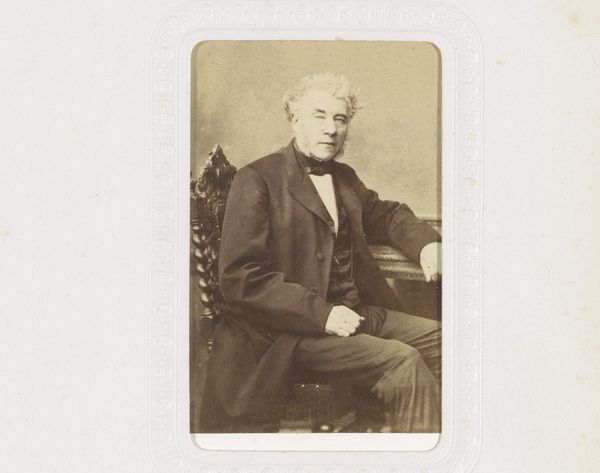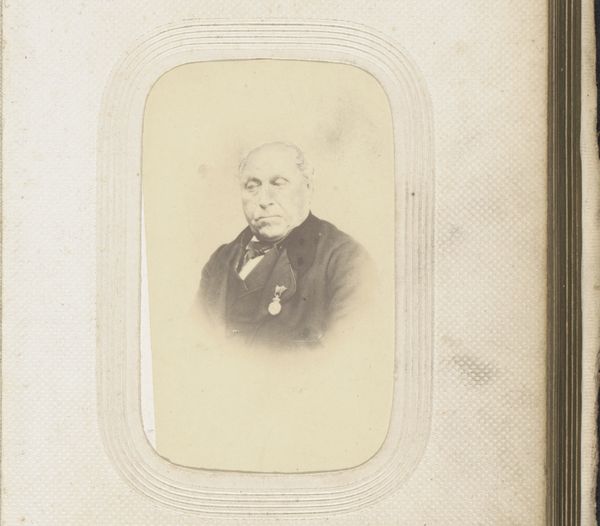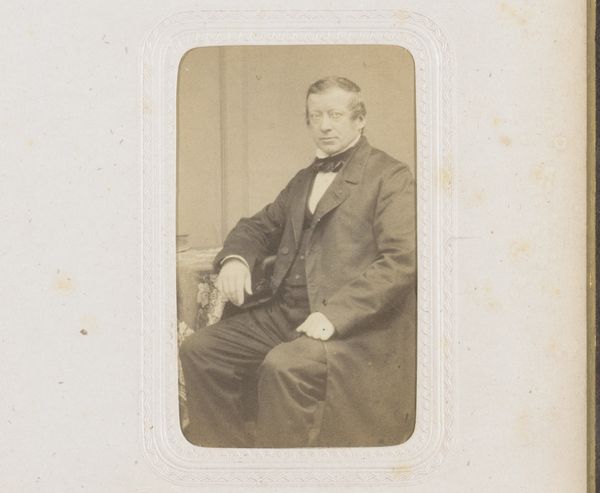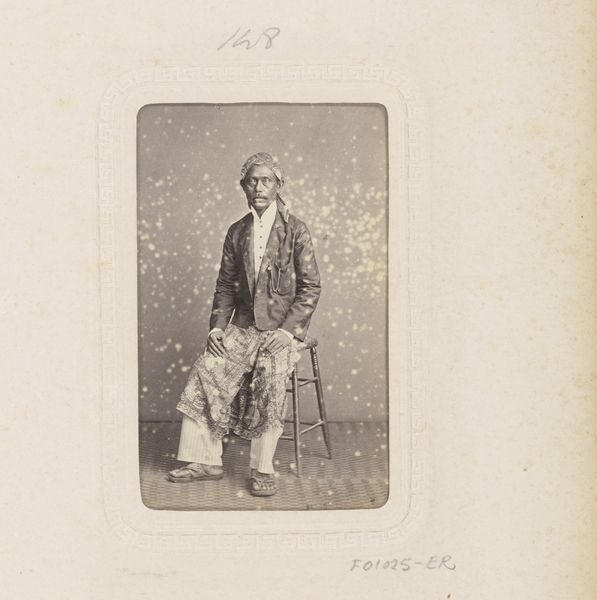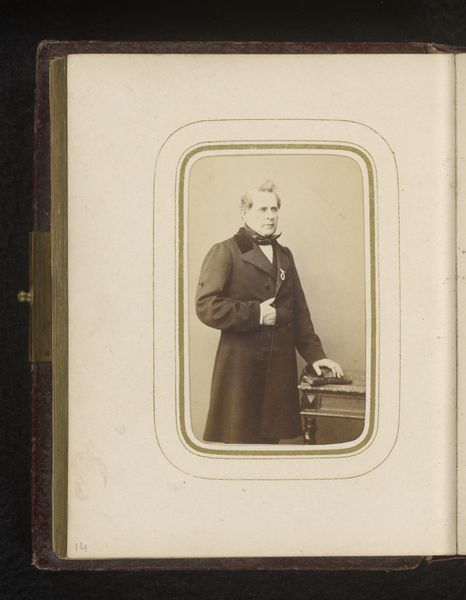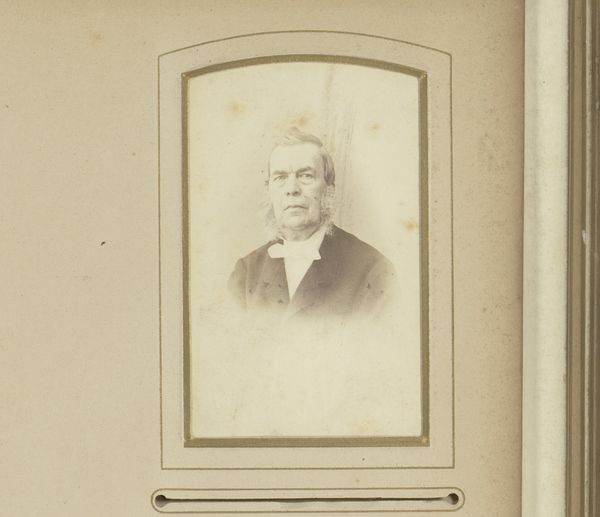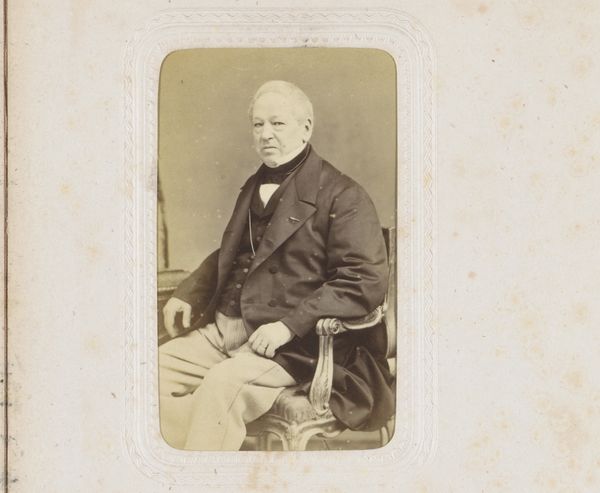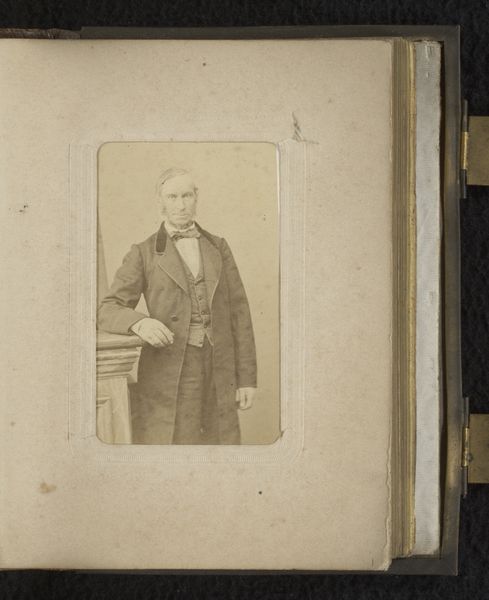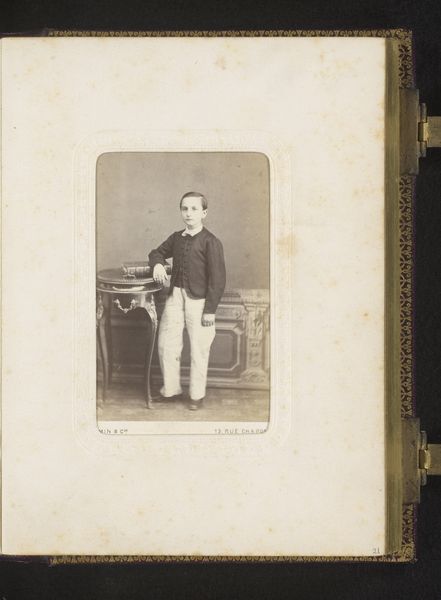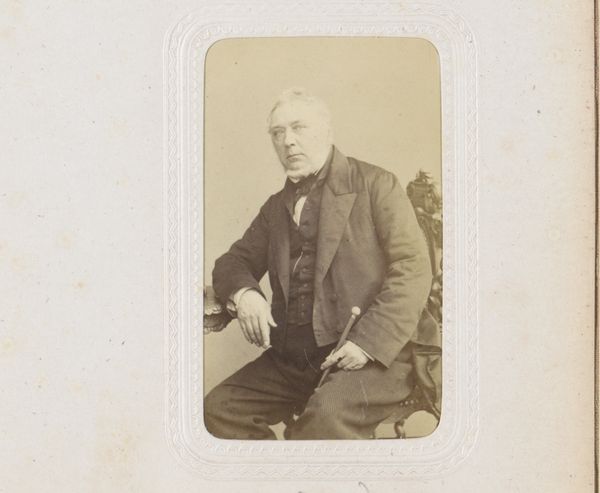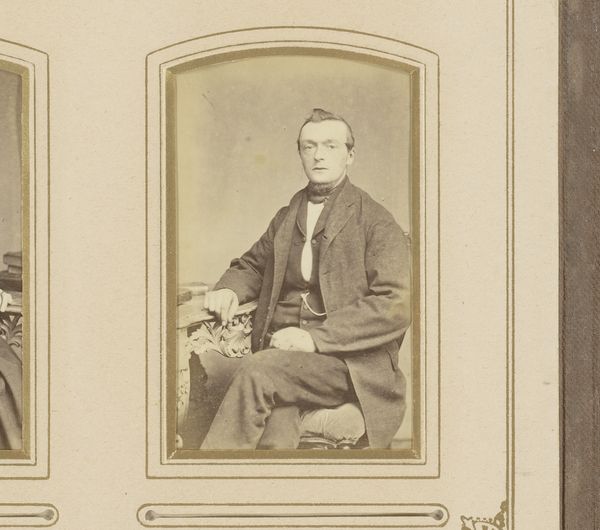
photography
#
portrait
#
16_19th-century
#
photography
#
historical photography
#
realism
Dimensions: height 82 mm, width 50 mm
Copyright: Rijks Museum: Open Domain
Editor: Here we have a photograph, “Portret van Johan Anne Slingendonck” created between 1860 and 1875 by Maurits Verveer. It looks like it’s held at the Rijksmuseum. It’s quite a stately portrait; what’s most striking to me is the contrast between the sitter's relaxed pose and his formal attire. What can you tell me about this photograph? Curator: Well, the "Carte de Visite," like this, wasn't just about capturing a likeness. It emerged during a period of profound social and political shifts. Photography itself democratized portraiture. The sitter here is clearly a man of stature. The photograph allowed for broader accessibility of imagery. These images were widely circulated, shaping perceptions of individuals and solidifying social hierarchies, wouldn't you agree? Editor: That's interesting, I hadn't thought about it in terms of social hierarchies. How were these hierarchies maintained? Curator: Consider how individuals were represented in these cartes de visite. The choice of clothing, the setting, and even the pose all communicated a certain status and cultivated specific public image. They played a key role in reinforcing societal norms and projecting authority, and in many ways set a standard for contemporary photographic practice. What do you make of that? Editor: That makes a lot of sense. It seems like these photos weren't just personal mementos but tools for social and political positioning. The formality reinforces this. Curator: Exactly! It underscores the fascinating intersection of art, technology, and social power. It certainly adds depth to what initially seemed like a straightforward portrait. Editor: I never thought of portrait photography this way, but it opens up a whole new perspective for understanding these images. Curator: And that’s precisely why it's important to examine historical photography beyond aesthetics and recognize the power structures they reflect.
Comments
No comments
Be the first to comment and join the conversation on the ultimate creative platform.
